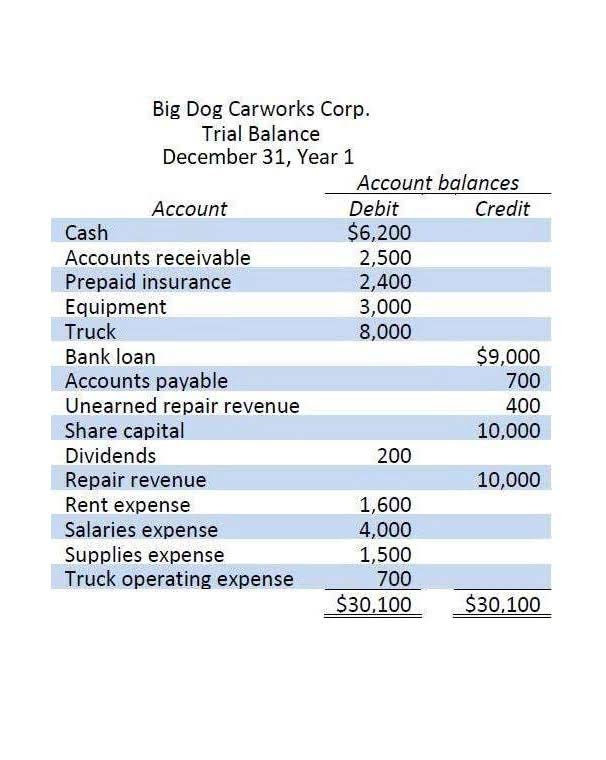
It should be noted that if an account is normally a debit balance it is increased by a debit entry, and if an account is normally a credit balance it is increased by a credit entry. So for example a debit entry to an asset account will increase the asset balance, and a credit entry to a liability account will increase the liability. Forecasting, on the other hand, uses normal balances to estimate the financial outcomes of various scenarios. By applying expected transactions to the normal balances of accounts, financial professionals can simulate the effects of business decisions on the company’s financial trajectory. This forward-looking approach is instrumental in strategic planning and risk management, as it allows businesses to prepare for potential financial challenges and opportunities. The analysis also extends to the examination of internal consistency within the financial records.
- Whether you’re an entrepreneur or a seasoned business owner, understanding the normal balance of accounts is crucial to keeping your business’s financial health in check.
- These accounts normally have credit balances that are increased with a credit entry.
- Similarly, if a liability account happens to be overpaid, it would be incorrect to continue reporting it as a liability with a debit balance because it no longer represents an amount owed.
- The increase in inventory, an asset, is a debit because that’s its normal balance for inventory.
- Debits increase asset and expense accounts but decrease liabilities, equity, and revenue.
- It also helps meet rules set by the International Accounting Standards Board (IASB) and the IRS.
Difference Between Banking and Accounting Perspectives

This is often illustrated by showing the amount on the left side of a T-account. Additionally, the use of analytical procedures can provide insights into the validity of account balances. These procedures may include trend analysis, ratio analysis, and other financial diagnostics that compare current data with historical figures, budgeted amounts, or industry standards. Significant deviations from expected patterns can be indicative of errors or irregularities that warrant further investigation. This means that contra accounts reduce the net amount reported on the financial statement and business transaction.
- Using ratios from the balance sheet, like debt-to-equity, helps compare a company’s health to others.
- A credit records financial information on the right side of an account.
- In other words, it’s the side (debit or credit) that increases the balance of the account.
- The rules of debit and credit determine how a change affected by a financial transaction can be updated in a journal and then applied to accounts in ledger.
- By recording transactions as debits or credits correctly, companies ensure their financial reports are accurate.
Debits vs credits
Let’s say there were a credit of $4,000 and a debit of $6,000 in the Accounts Payable account. Since Accounts Payable increases on the credit side, one would expect a normal balance on the credit side. However, the difference between the two figures in this case would be a debit balance of $2,000, which is an abnormal balance.
Expense account

This affects how a company makes money and manages its spending, which changes its financial health. University instructors and accounting supervisors put a lot of effort into teaching this. They use tools like accounting online resources to help tell the financial story accurately. Normal balance shows how QuickBooks transactions flow through different accounts. This is vital for keeping accurate financial records and showing a company’s financial health.
What is a Normal Balance in Accounting?
This situation could possibly occur with an overpayment to a supplier or an error in recording. That normal balance is what determines whether to debit or credit an account in an accounting transaction. Accounts that typically have a debit balance include asset and expense accounts.
Liability Accounts
For example, if an asset account has a debit balance, it means that more money was spent on that asset than was received from selling it. While those that typically have normal balance a credit balance include liability and equity accounts. This chart is useful as a quick reference to determine whether an increase or decrease in a particular type of account should be recorded as a debit or a credit. Here’s a simple table to illustrate how a double-entry accounting system might work with normal balances. Expenses are the costs a company incurs to generate revenue.

Normal balances of accounts chart”” data-sheets-userformat=””2″:513,”3″:”1″:0,”12″:0″>Normal balances of accounts chart
The Debits and Credits Chart below is a quick reference to show the effects of debits and credits on accounts. The chart shows the normal balance HVAC Bookkeeping of the account type, and the entry which increases or decreases that balance. The expenses are recorded as a credit on the normal balance.
What is the significance of normal balances in maintaining accurate financial records?

In accounting, however, debits and credits are neutral terms that simply reflect the dual-sided nature of recording transactions. They do not signify good or bad financial events but are tools to maintain the equilibrium of the accounting equation. Asset accounts represent the resources owned by a company that have economic value and can provide future benefits.
